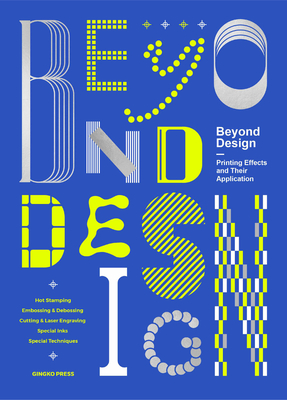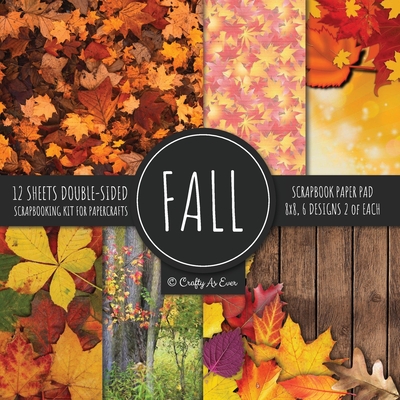


A step-by-step guide on how to create personal and contemporary linocut prints.
A linocut is a relief print created by carving a design into a printing block. It is the uncut surface, not the carved away areas, that gives you your image when you roll it with ink, lay paper on top then apply pressure to produce a print. With 18 easy-to-follow projects that can be adapted to suit your own ideas, experienced printmaker Sam Marshall guides you through the whole process - from the drawing to the carving to the inking to the printing - of creating your own beautiful prints and handmade cards whether you are working from your kitchen table or a more advanced studio set-up. By taking inspiration from everyday life, Sam helps you to build your confidence with observational drawing. Featuring step-by-step projects, the book demonstrates a range of skills with low-cost materials to produce simple linocuts, reduction linocuts and colourful multi-block prints. You will also learn more experimental techniques such as combining monoprint, chine collé, jigsaw linocuts and rainbow rolls and pick up handy tips on subjects such as 'noise' and editioning your prints. Beautifully illustrated with photographs of Sam's own drawings and linocuts, and featuring the work of 5 talented printmakers, Linocut is an essential guide to linocut printmaking. Packed with creative and practical advice to guide and encourage you, whether you're just starting out, returning to the craft or looking to expand your printmaking skills.



Discover the amazing Gelli Arts(R) plate--a revolutionary printmaking surface that makes it easy to produce beautiful, one-of-a-kind artwork with amazing colors and textures This book will show you how to use gelatin printing to create 32 stunning designs of layered prints, decorative pages for art journals, fabric for quilting, greeting cards, and more Gelli Arts(R) Printing Guide teaches you all the basics you need to know on supplies, how to get started, and the best techniques for making colorful backgrounds, textured pages, multiple layers, and basic borders. Perfect for both beginners and experts, durable and reusable Gelli Arts(R) plates are easy to clean so you can quickly change paint colors and move on to your next project. This newly expanded edition contains an updated gallery of art featuring the latest Gelli Arts(R) plate techniques. Wonderful results can be obtained quickly, and simple variations give each print its own unique personality

A leading art historian presents a new grammar for understanding the meaning and significance of print
In process and technique, printmaking is an art of physical contact. From woodcut and engraving to lithography and screenprinting, every print is the record of a contact event: the transfer of an image between surfaces, under pressure, followed by release. Contact reveals how the physical properties of print have their own poetics and politics and provides a new framework for understanding the intelligence and continuing relevance of printmaking today. The seemingly simple physics of printmaking brings with it an array of metamorphoses that give expression to many of the social and conceptual concerns at the heart of modern and contemporary art. Exploring transformations such as reversal, separation, and interference, Jennifer Roberts explores these dynamics in the work of Christiane Baumgartner, David Hammons, Edgar Heap of Birds, Jasper Johns, Corita Kent, Glenn Ligon, Julie Mehretu, Robert Rauschenberg, and many other leading artists who work at the edge of the medium and beyond. Focusing on the material and spatial transformations of the printmaking process rather than its reproducibility, this beautifully illustrated book explores the connections between print, painting, and sculpture, but also between the fine arts, industrial arts, decorative arts, and domestic arts. Throughout, Roberts asks what artists are learning from print, and what we, in turn, can learn from them. Published in association with the Center for Advanced Study in the Visual Arts, National Gallery of Art, Washington
From Edouard Manet's portrait of naturalist writer Émile Zola sitting among his Japanese art finds to Van Gogh's meticulous copies of the Hiroshige prints he devotedly collected, 19th-century pioneers of European modernism made no secret of their love of Japanese art. In all its sensuality, freedom, and effervescence, the woodblock print is single-handedly credited with the wave of japonaiserie that first enthralled France and, later, all of Europe--but often remains misunderstood as an exotic artifact that helped inspire Western creativity.
The fact is that the Japanese woodblock print is a phenomenon of which there exists no Western equivalent. Some of the most disruptive ideas in modern art--including, as Karl Marx put it, that all that is solid melts into air--were invented in Japan in the 1700s and expressed like never before in the designs of such masters as Hokusai, Utamaro, and Hiroshige in the early 19th century.
This volume lifts the veil on a much-loved but little-understood art form by presenting the most exceptional Japanese woodblock prints in their historical context. Ranging from the 17th-century development of decadent ukiyo-e, or pictures of the floating world, to the decline and later resurgence of prints in the early 20th century, the images collected in this edition make up a record not only of a unique genre in art history, but also of the shifting mores and cultural development of Japan.
We discover the four pillars of the woodblock print--beauties, actors, landscapes, and bird-and-flower compositions--alongside depictions of sumo wrestlers, kabuki actors, or enticing courtesans--rock stars who populated the floating world and whose fan bases fueled the frenzied production of woodblock prints. We delve into the horrifying and the obscure in prints where demons, ghosts, and otherworldly creatures torment the living--stunning images that continue to influence Japanese manga, film, and video games to this day. We witness how, in their incredible breadth, from everyday scenes to erotica, the martial to the mythological, these works are united by the technical mastery and infallible eye of their creators and how, with tremendous ingenuity and tongue-in-cheek wit, publishers and artists alike fought to circumvent government censorship.
This edition compiles the finest extant impressions from museums and private collections across the globe, accompanied by descriptions to guide us through this frantic period in Japanese art history.








Our unique collection of colorful backgrounds and craft paper is perfect for all kinds of crafting, stationery, decoupage, origami, invitations, printmaking, bookbinding, handicraft, handmade paper beads and jewelry, as well as other crafty art projects.


This book is a collection of Kuniyoshi's works that featured cats. It will attract ukiyo-e lovers, cat lovers, and also provides valuable inspiration to designers or illustrators.
Kuniyoshi Utagawa (1797-1861) was one of the great masters of the Japanese ukiyo-e style of woodblock prints and painting. Born in 1797 to a silk-dyer, he helped his father's business as a pattern designer. His drawing talent from an early age attracted the attention of the famous print master Toyokuni Utagawa, and Kuniyoshi became one of his apprentices in 1811. The range of Kuniyoshi's preferred subjects included many genres: landscapes, beautiful women, Kabuki actors, mythical animals, and cats. More than any other Japanese artist, Kuniyoshi depicted cats humorously and satirically, with great accuracy and careful observation.



Add a touch of panache and style to a wide variety of graphic projects with the decorative letters in this unusual and practical collection. Typographer Dan X. Solo has compiled 100 different swash letter fonts -- typefaces characterized by ornate letters with long tails and flourishes. Included here are: Cantini Casual; Cranston; El Greco; Goudy Cursive; Italian Slab Fancy; Mardi Gras Regular; Raffia Initials; Rousseau Fancy; Allegro Swash; Artcraft; and dozens more.
All fonts include uppercase alphabets; most also contain lowercase letters and numerals. Inexpensive and royalty-free, these alphabets are ideal for use in display ads, on posters, signs, menus -- almost any printed communications.